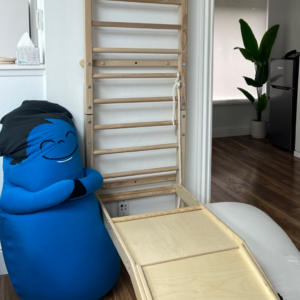
Sensory overload is a common experience for many children, especially those with sensory processing difficulties. It occurs when the brain is unable to properly process and interpret the overwhelming amount of sensory information coming in from the environment. This can lead to feelings of discomfort, stress, and anxiety in children. In this blog post, we’ll explore how to identify and manage sensory overload in children.
Recognize the Signs
The first step in managing sensory overload is to recognize the signs. Some common signs of sensory overload in children include:
- Covering ears or eyes
- Becoming irritable or agitated
- Withdrawing from social situations
- Difficulty with transitions
- Avoiding certain textures, smells, or sounds
- Overreacting to sensory stimuli
If you notice these signs in your child, it may be a sign that they are experiencing sensory overload.
Identify Triggers
Once you recognize the signs, it’s important to identify the triggers that may be causing the sensory overload. This can be done by observing your child’s behavior and noting what situations or stimuli seem to cause them distress. Some common triggers include:
- Loud noises or sudden sounds
- Bright or flickering lights
- Crowded or busy environments
- Unfamiliar textures or smells
- Transitions or changes in routine
Identifying these triggers can help you better prepare your child and avoid situations that may cause sensory overload.
Create a Sensory-Friendly Environment
To help manage sensory overload, it’s important to create a sensory-friendly environment for your child. This can include things like:
- Dimming lights or using soft lighting
- Playing calming music or white noise
- Limiting exposure to screens
- Providing a comfortable and quiet space for your child to retreat to
- Using sensory tools like weighted blankets or fidget toys
Creating a sensory-friendly environment can help your child feel more comfortable and relaxed, reducing the likelihood of sensory overload.
Provide Sensory Breaks
If your child does experience sensory overload, it’s important to provide sensory breaks to help them recover. This can include things like taking a break from the situation, going to a quiet space, or engaging in a calming activity like deep breathing or sensory play.
Seek Professional Support
If your child is experiencing frequent sensory overload, it may be helpful to seek professional support from an occupational therapist. An OT can work with you and your child to develop strategies and tools to manage sensory overload and improve overall sensory processing. Our therapists at Children’s Therapy Center, Co. specialize in helping families recognize signs of sensory processing difficulties as well as how to treat it.
In conclusion, sensory overload can be a challenging experience for children and their families. However, by recognizing the signs, identifying triggers, creating a sensory-friendly environment, providing sensory breaks, and seeking professional support when needed, you can help your child manage and reduce sensory overload. Remember, every child is unique, and what works for one child may not work for another. Be patient, flexible, and open to trying different strategies to help your child thrive.







